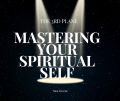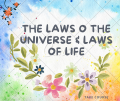
This article discusses a lecture on Carl Jung’s theory of archetypes. The lecture explains Jung’s conception of the psyche, differentiating between the conscious mind, the personal unconscious (containing personal memories and traumas, organized into complexes), and the collective unconscious (containing archetypes, universal, primordial images and patterns of experience inherited across generations). Key archetypes like the shadow, persona, anima/animus, and the self are discussed, emphasizing their role in the individuation process—achieving wholeness and self-realization. The lecture uses examples from mythology, literature (particularly superhero narratives and the life of Christ), and popular culture to illustrate how archetypes manifest as archetypal images in individual and collective experience, highlighting the interplay between conscious and unconscious processes and their impact on personal growth and cultural understanding. The overall purpose is to illuminate Jung’s complex theory, making it accessible and relevant to contemporary life.
Carl Jung’s theory of personality is based on the idea that people experience the world through four main psychological functions and that one of these functions is usually dominant. Jung also believed that personality is inherited and part of the collective unconscious, which is a shared layer of the psyche that connects all humans. Here are some of the key aspects of Jung’s theory:
- Psychological functionsJung’s theory suggests that people use four main psychological functions to experience the world: sensation, intuition, feeling, and thinking. People can be categorized based on their preferences for these functions.
- Collective unconsciousThis is the idea that a part of the unconscious mind is genetically inherited and not shaped by personal experience. It’s also known as the “objective psyche” and is thought to include patterns, beliefs, myths, and images that are shared across cultures and centuries.
- ArchetypesJung believed that archetypes are universal symbols or patterns that are present in the collective unconscious. He identified four major archetypes: the persona, the shadow, the anima/animus, and the self. Jung believed that archetypes are archaic forms of innate human knowledge that can be inferred from religion, dreams, art, and literature.
- Extroversion and introversionJung is known for being the first to identify these two personality types. Extraversion refers to people who are outgoing, talkative, assertive, and bold, while introversion refers to people who are shy, quiet, and private.
What is the difference between the personal unconscious and the collective unconscious?
Archetypes are universal, inherited patterns of thought and behavior that reside in the collective unconscious. They represent fundamental human experiences, like birth, death, and the relationship between parent and child. Imagine a blueprint that lays out the basic structure of a building; the archetype is the blueprint, while the individual buildings, unique in their design, are the archetypal images.
The personal unconscious is unique to each individual, containing forgotten memories and repressed experiences. It’s like a personal archive. The collective unconscious, on the other hand, is shared by all humanity, holding archetypes formed throughout human history. Think of it as a universal library containing stories and patterns that transcend individual experience.
How do archetypes influence our lives?
Archetypes act as underlying forces shaping our perceptions, motivations, and behaviors. They can manifest in dreams, myths, art, and our relationships with others. For example, the Hero archetype might inspire us to seek adventure and overcome challenges, while the Shadow archetype represents our darker, hidden aspects.

What are some examples of Jungian archetypes?
Some well-known Jungian archetypes include:
- The Persona: The social mask we wear to fit in.
- The Shadow: Our darker, hidden side.
- The Anima/Animus: The feminine aspect in a man’s psyche / the masculine aspect in a woman’s psyche.
- The Wise Old Man/Woman: Represents wisdom and guidance.
- The Self: The archetype of wholeness and integration.
What is the concept of “shadow work” in Jungian psychology?
Shadow work involves confronting and integrating the Shadow archetype, acknowledging and accepting our darker tendencies rather than suppressing them. This can lead to greater self-awareness and personal growth.
How does Jung’s concept of individuation relate to archetypes?
Individuation is the process of becoming a unique, whole individual. It involves recognizing and integrating various archetypes within ourselves, including the Shadow, Anima/Animus, and the Self. This journey leads to greater self-understanding and psychological maturity.
How are archetypes expressed in modern culture?
Archetypes continue to appear in modern storytelling, including movies, TV shows, and literature. The enduring popularity of superhero films, for example, might reflect our collective need for heroes and our fascination with individuals who transcend limitations. Jungian analysis can help us understand the deeper psychological themes underlying these cultural phenomena.
How can understanding archetypes be beneficial?
By understanding archetypes, we can gain insights into our own motivations, behaviors, and relationships. This awareness can help us make conscious choices, overcome negative patterns, and live more fulfilling lives. Archetypes provide a framework for understanding the human condition and finding meaning in our experiences.






















0 responses on "What are archetypes according to Carl Jung?"